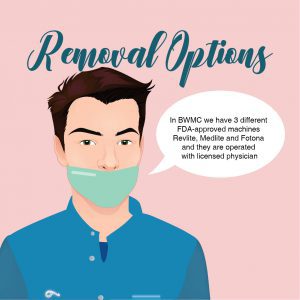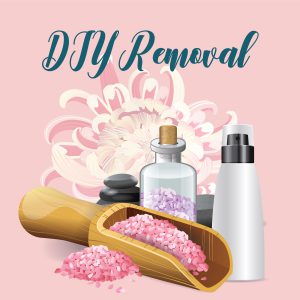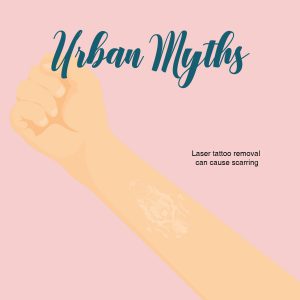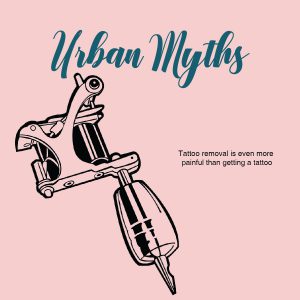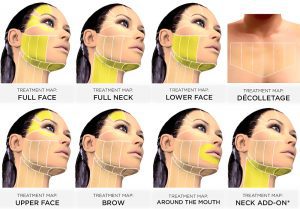Along with Dr. Kent Woo, the information below is a detailed description of the stem cell therapy and will help you to decide if you would like to accept such therapy. Please read the infographic thoroughly and you are encouraged to ask any questions related to the therapy.
What is wellness and aging?
Wellness refers to the state of the body and mind which are in harmony and balance. In wellness, the body and mind will thrive, exude positiveness and creativity, and are ready to accept challenges.
Aging is a natural process when the number of cells dying each day starts to outweigh the new cells that are being created to replace the former. New cells are formed from progenitor cells which in turn are formed by stem cells. Stem cells dwindle with age and therefore the effects of aging are really the effects of reduced stem cells. However, stem cells are also reduced due to diseases, illnesses, environmental factors such as smoking and heavy drinking, lack of exercise and undernourishment and mental depression.
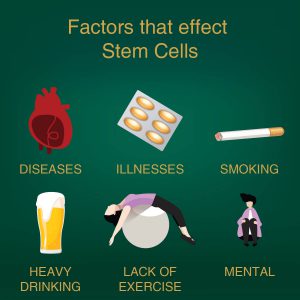
What are stem cells?
Stem cells which are found in our body are non-specific cells without any tissue-specific structure. They can easily replicate themselves to form specific cells such as heart muscle cells or nerve cells and to perform specific functions.
Research is now showing that stem cells can slow down the progress of some diseases by replicating into specific cells and replacing the damaged cells in the body; thus, restoring the vitality and functionality of the organs. In fact, stem cells can also be expanded outside the body under laboratory conditions and later transplanted in the defective area of the organ for it to regain its functional efficiency. Because of this anti-aging property, cosmetic formulations based on stem cell regenerative therapy are increasingly being introduced to the market to halt the mark of aging on the skin and restore its youthful glow.
There are many types of stem cell such as blood stem cells, otherwise known as hematopoietic stem cells, which form blood related-cells. We have selected a type of stem cells known as human mesenchymal stem cell. These mesenchymal stem cells have been proven to be able to change into heart muscle cells, cartilage, fat cells, nerve cells and many other cell types. Additionally, mesenchymal stem cells have also been used for clinical trial to treat several diseases. This regeneration property makes these mesenchymal stem cell as an anti-aging therapy.
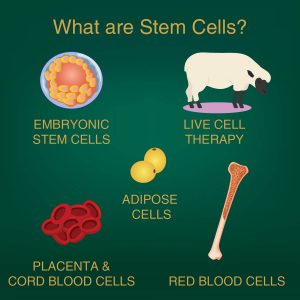
How do stem cells help in wellness and healthy aging?
Stem cells help in wellness and healthy aging by ensuring that the number of new cells generated each day is adequate to compensate for old cells which are removed from the body. In order for this strategy to work, you must receive enough stem cells which are in the tens to hundreds of millions. It is not possible to obtain these amounts of stem cells naturally. Therefore, the stem cells are cultured and expanded in a clean sterile laboratory before introduction into your body. This ensures consistent stem cell quality and numbers at every stem cell infusion.
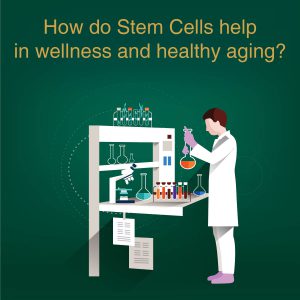
Why human and not animal stem cells?
Humans differ significantly from animals. Animal stem cells are also considered old technology and will not ever be able to function in the human as stem cells to provide new cells for specialized organs and tissue. In fact, they are hunted down by the immune defense cells in the human body and destroyed altogether. Therefore, any effects noticed by the patient are transient and most probably related to its associated growth factors in the serum. However, should the animal stem cells overwhelm the host immune system then it will cause a severe reaction. There has been consistent report on the safety issues of using animal stem cells. This is why animal stem cells are currently prohibited in many countries.
Furthermore, animal placental stem cells were used which contain a mix-bag of cells. A lot of animals were required to produce a single treatment. This older technology which does not provide pure stem cells and requires animals to be sacrificed has now been superseded by more humane and advanced technological methods.
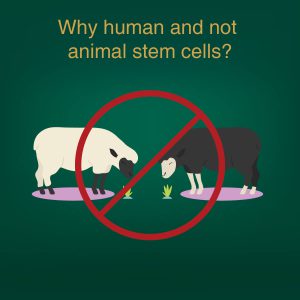
What are mesenchymal stem cells?
Mesenchymal stem cells (MSCs) are human stem cells which have so far demonstrated the greatest ability to turn into other tissue types including the nerves, the heart muscles, blood vessels, cartilage, bone, collagen producing cells, fat tissue, insulin producing cells, kidney cells, liver cells and skin. In addition, the MSCs are immunopriviledged; which means that they will not be killed by the host immune defence cells and neither will they cause a reaction. Finally, MSCs carry with them a host of growth factors and hormones which help to host cells to recharge and rejuvenate. Therefore, the MSCs do not just replenish stem cells but also salvage and revive any dwindling stem cells in the host. MSCs are currently the most widely researched stem cell in clinical studies and have been extensively studied in patients with heart disease, stroke, sports injuries and arthritis and autoimmune disease.
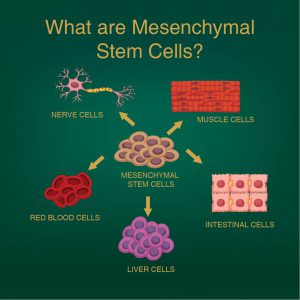
What is the evidence behind it?
There is a wealth of information about the benefits of mesenchymal stem cells (MSCs) in the treatment of various diseases. In all these cases, treatment with MSCs result in reduction of organ damage, restoration of function, improvement in total well-being and greater energy. These effects have been noted in varying degrees with patients with severe heart failure, major heart attacks, strokes and other neurodegenerative diseases, head and spinal cord injuries, musculoskeletal disease and injuries, autoimmune diseases and diabetes. If the MSCs could help treat such severe organ damage in ill patients, therefore, it could potentially be much better employed to prevent the organ injury or disease in the first place.
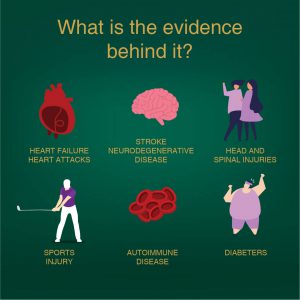
Are stem cells safe?
Stem cells are safe when obtained from your own body for your own use only. When using another person’s stem cells there is a theoretical possibility of a host versus graft reaction. This has not been seen with Mesenchymal stem cells (MSCs) and so MSCs are widely used in allogeneic treatments. Animal stem cells and embryonic/fetal stem cells potentially have more hazardous complications such as cancer formations and severe reactions.
Therefore, apart from your own stem cells, the next safest source of stem cells would be human Mesenchymal stem cells (MSCs) especially if that donor has not been exposed to environmental carcinogens (smoking, UV, radiation, chemicals in foods, etc) such as from the umbilical cord of a newborn. Furthermore, all our donors were free from genetic diseases, cardiovascular diseases, chronic infections and cancer for at least three generations.
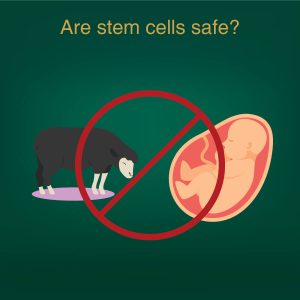
How are stem cells processed?
All Mesenchymal stem cells are handled from the beginning to the end by specially trained and experienced scientists who ensure that the cells were labelled, transported, isolated and expanded in a professional and sterile manner.
Before we release our stem cells for treatment, we will perform several tests. We will perform tests to ensure that the stem cells are free from infectious diseases. These tests include RPR (VDRL), HIV 1 & 2 Antibody, Hepatitis B surface Antigen (HbsAg), Hepatitis C Antibody (Total) – Anti-HCV, Cytomegalovirus IgM Antibody, HTLV 1 & II Antibody and HIV p24 Antigen.
In our laboratory, we utilize the most modern method of stem cell production to produce good and viable stem cells. We will perform tests to check the stem cells for appropriate surface markers and to determine the condition of the cells. We will send the expanded stem cells to test for bacterial culture, fungal culture and mycoplasma before releasing the cells for treatment.
If the stem cells fail any one of the tests above, the cells will be discarded and new stem cells will be isolated. All the above-mentioned tests are performed to ensure that we only provide you with the purest stem cells which are free from contamination.
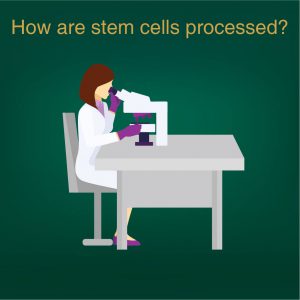
How are the stem cells prepared before they are infused into my body?
To maintain the viability of the stem cells and its highest quality, we will store the stem cells in an extremely cold condition. When you agree to receive this stem cell treatment, the date for your stem cell treatment will be arranged. On treatment day, our highly qualified scientist will thaw and wash the stem cells before infusing them into your body. We will only thaw the stem cells when all details of your treatment are confirmed and will infuse the stem cells into your body as soon as possible after preparation.
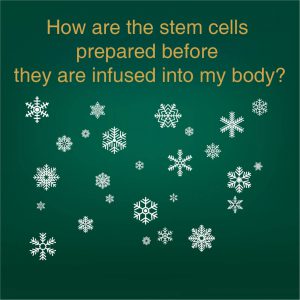
What will happen on my confirmed treatment day?
You are advised to arrive at hospital at least 30-60 minutes in advance. A nurse will first give you a saline drip which is a 30 minutes procedure to prepare your body in receiving the stem cells. After that, the stem cells will be slowly infused into your vein via a syringe pump for about 30 minutes. Once stem cell infusion has completed, you will continue to have saline drip for another 15 – 30 minutes. This is to encourage stem cell circulation in your body after stem cell infusion. Once this process is completed, you may go home and continue your normal daily activities. If you have any previous allergies or hay fever, please inform doctor in advance and you may be given a prophylactic injection prior to stem cell therapy.
The most important step is to understand the nature and objectives of the therapy. Your doctor will also assess you thoroughly to make sure that you are eligible for stem cell treatments. This may include a questionnaire, simple blood test, some imaging and functional tests.
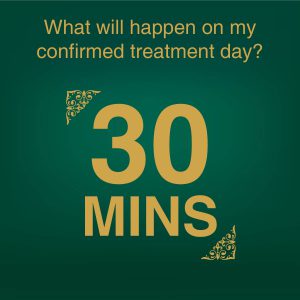
How often should we go for such therapy?
This varies with your age and prevailing conditions such as smoking, diabetes, etc. Normally we recommend receiving the treatment once to three times a year.
Stem cell therapy for specific conditions may be given concurrently during this time whereby the cells are directly injected into the organ or area concerned in order to provide the maximal effect of healing. Stem cell dose will vary depending on the severity of the condition.
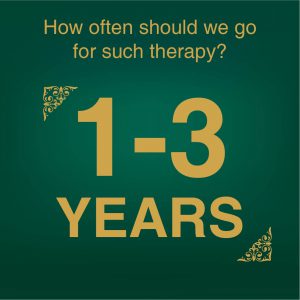
What are the side-effects and complications?
You may experience discomfort on the injection site during the stem cell infusion. Some recipients may experience low-grade fever after stem cell infusion, which may be treated with antipyretics. Reaction against allogenic mesenchymal stem cells infusion has been reported in less than 1% and new or recurrent cancer directly related to MSCs infusion has not yet been reported. If you feel any discomfort after the stem cell infusion which persists, please contact us immediately.
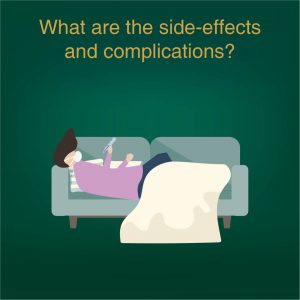
What are the benefits?
The testimonials of benefits include improved sense of wellbeing greater energy and stamina, improved memory, improved libido, less bone and joint pains, firmer skin and new coarser and darker hair. Clinically it has been documented that intravenous infusion of MSCs in patients with severe heart failure resulted in greater heart strength, less breathlessness, improved exercise capacity, lower requirement for insulin doses (for diabetes patients), improved kidney function and reduced hospitalizations. In other studies, MSCS have increased bone mineral density and reduced progression of osteoporosis, accelerated recovery in stroke, brain and spinal cord injuries and improved remission or delayed progression in patients with allergic and autoimmune diseases such as eczema, multiple sclerosis and lupus.
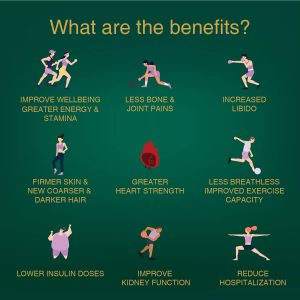
What else can I do to maintain wellness and healthy aging?
Wellness and healthy aging is not influenced by stem cells alone. You must help yourself by watching your diet. Fresh and organic produce in rich in essential vitamins, minerals and anti-oxidants and consumed in moderate quantities is important. So is regular physical exercise and adequate sleep. This healthy lifestyle is more important than stem cell or any other wellness and healthy aging strategies. On the other hand, mental stress, excessive consumption of food or drinks, too much sugar or fried foods, a sedentary lifestyle and smoking will sap your energy that stem cells alone will not be enough to compensate for.
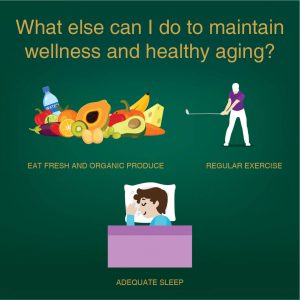
If I decide to go for the therapy, what is my next step?
Please first make sure you fully understood the nature and objectives of stem cell therapy. Please discuss any of your concerns and expectations with us.
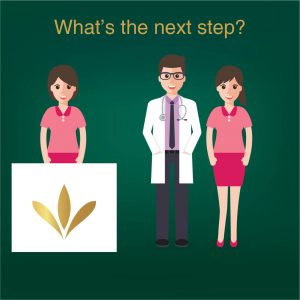
What if I have more questions or do not understand something?
You may contact us at any time to discuss about your treatment.

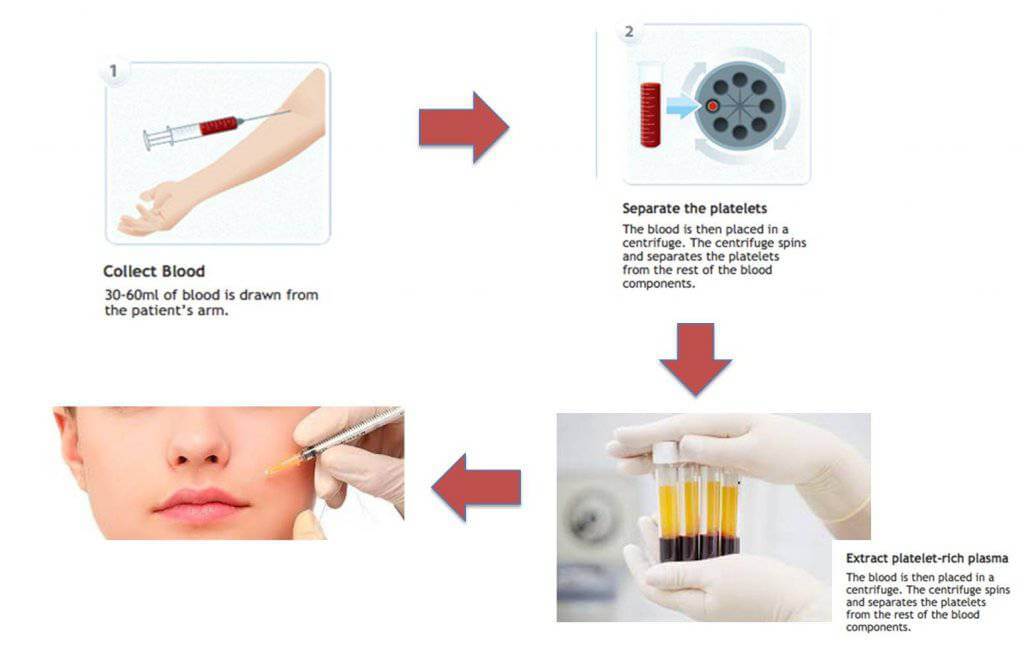
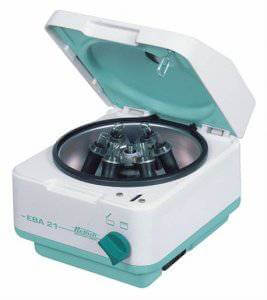
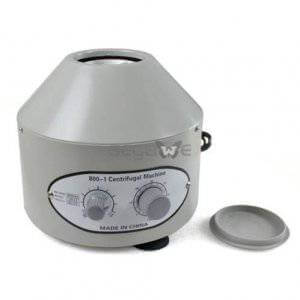
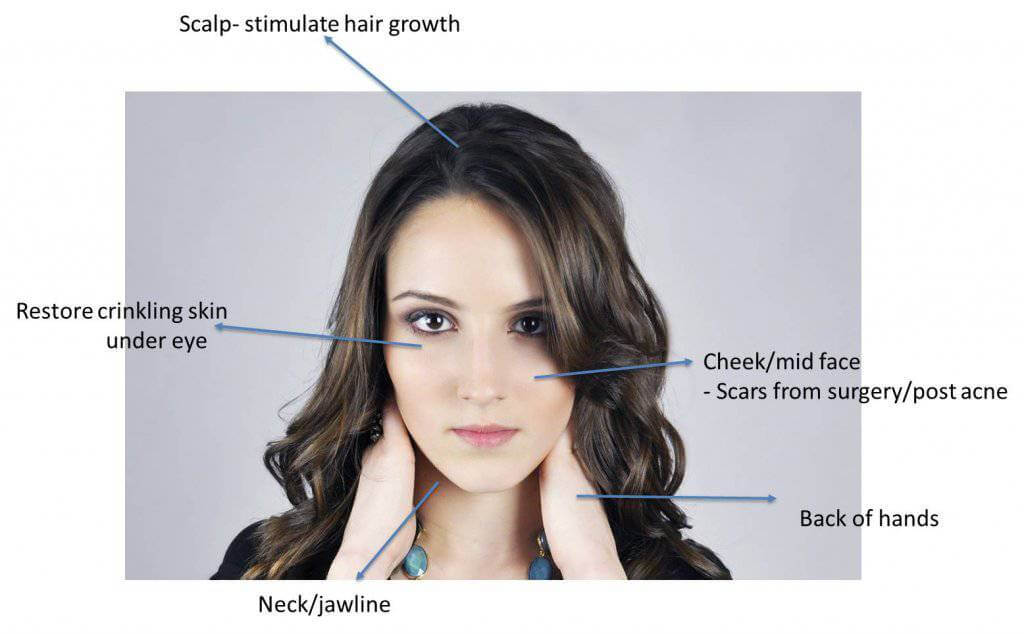
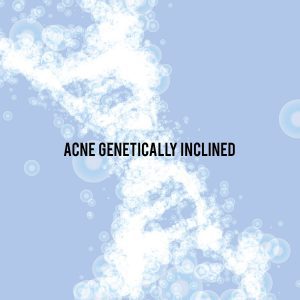
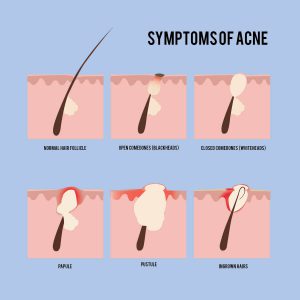
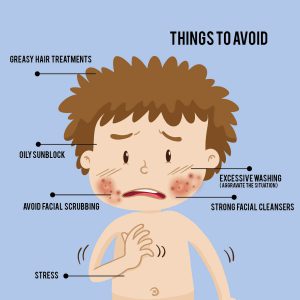
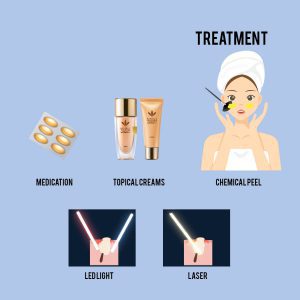
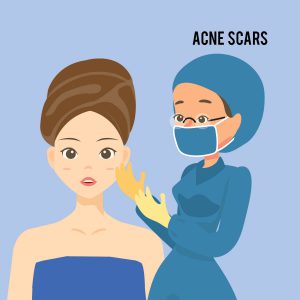
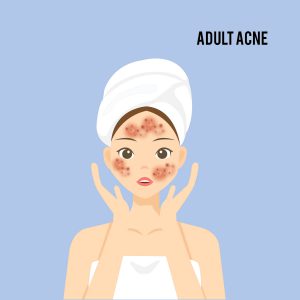

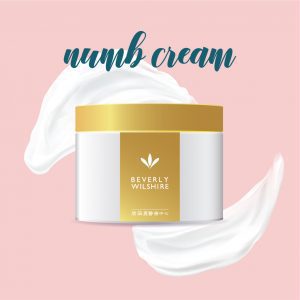
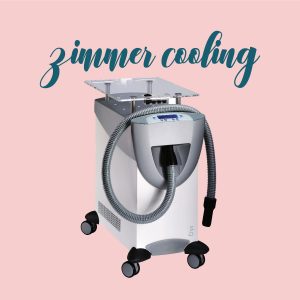
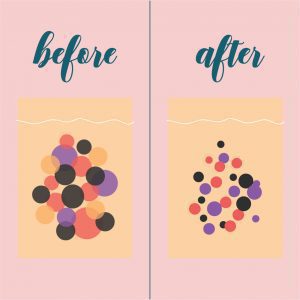
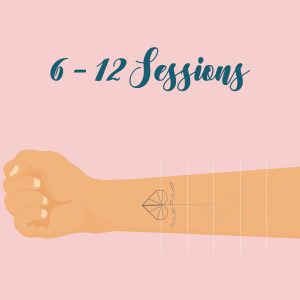
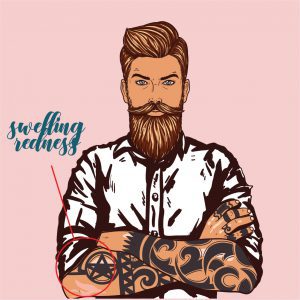
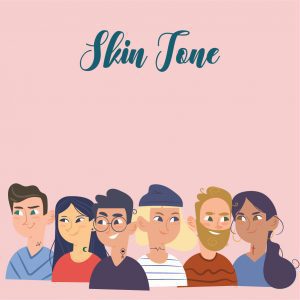
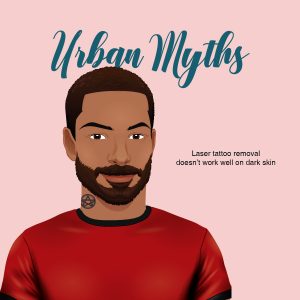 .
. 
